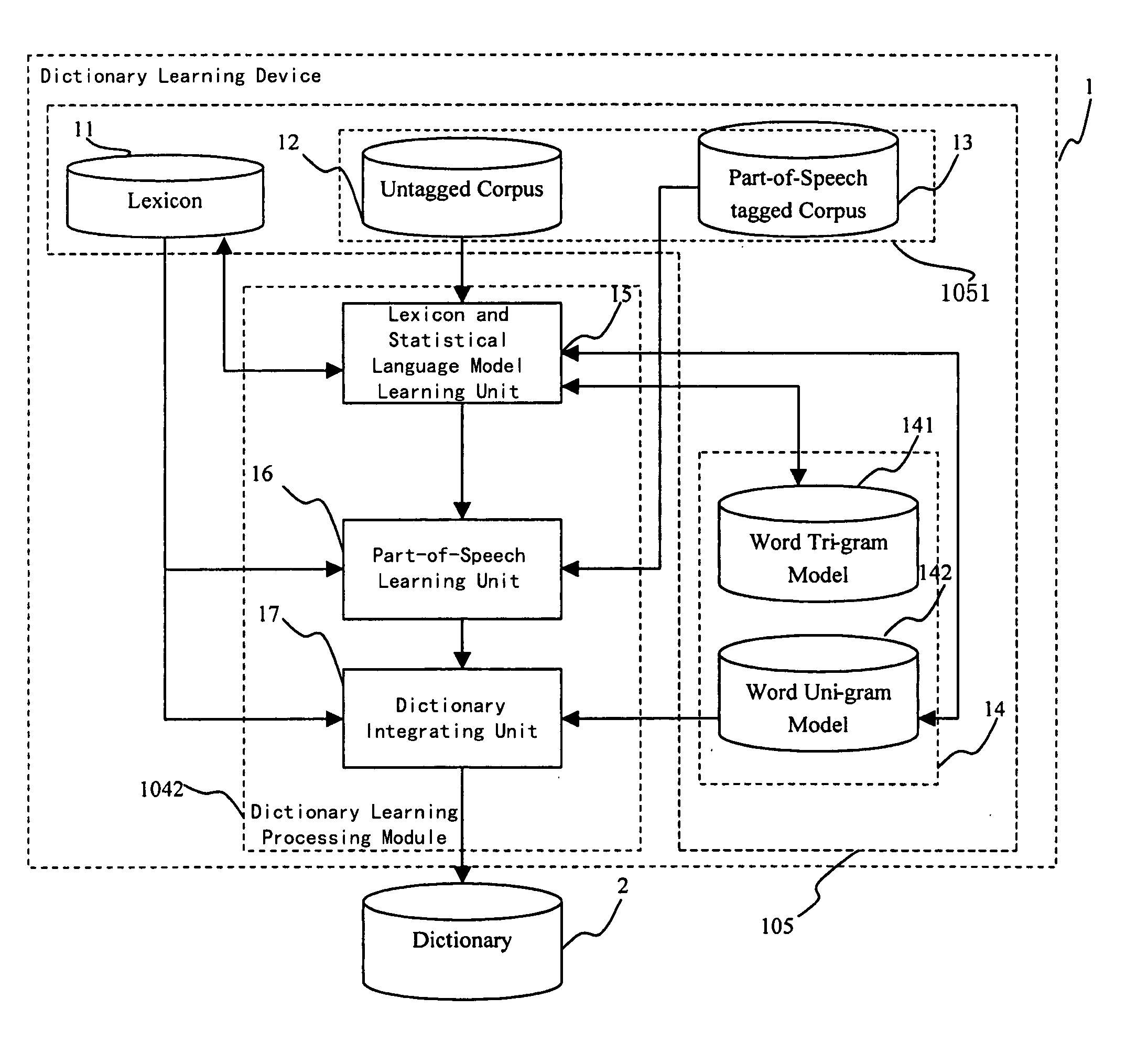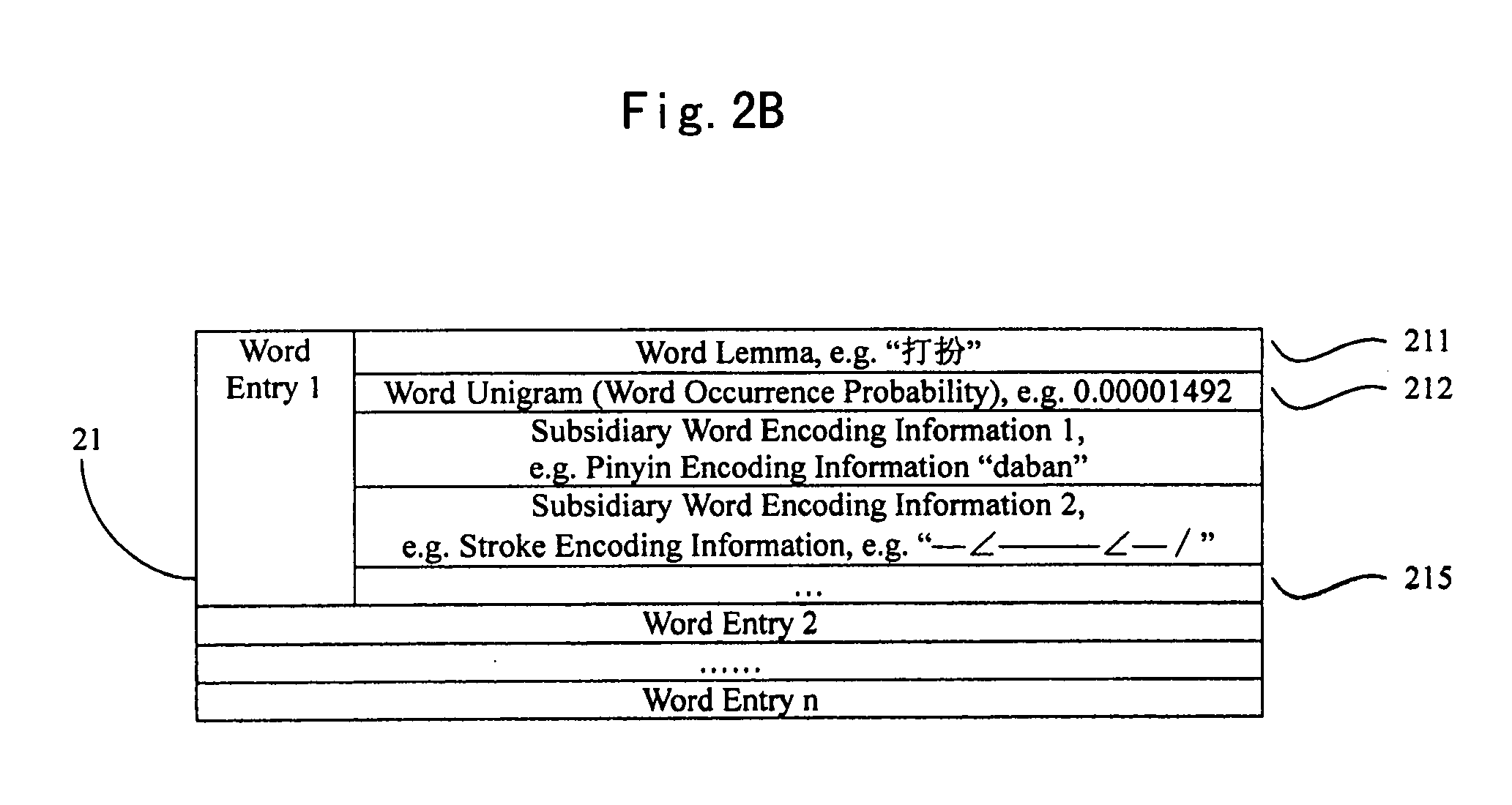Dictionary learning method and device using the same, input method and user terminal device using the same
a learning method and dictionary technology, applied in the field of natural language processing, can solve the problems of limiting the effect of word prediction to a great extent, significantly lowering the speed of these methods, and not being able to satisfy most users, so as to speed up the input and achieve the effect of sentence and word prediction. easy and fast, the effect of speeding up the inpu
- Summary
- Abstract
- Description
- Claims
- Application Information
AI Technical Summary
Benefits of technology
Problems solved by technology
Method used
Image
Examples
Embodiment Construction
[0041] A schematic block diagram illustrating the relationship between a dictionary learning device and a user terminal device of the present invention will be described with reference to FIG. 1. A dictionary learning device 1 learns a computer readable dictionary 2. A user terminal device 3 uses the dictionary to help user input text. The dictionary learning device 1 and user terminal device 3 are independent in some sense. The dictionary 2 trained from the dictionary learning device 1 can also be used in other application. The dictionary learning device 1 uses special dictionary learning method and special dictionary structure to build a small size dictionary which can provide a user with fast input.
[0042]FIG. 2A shows an example of the schematic structure of the dictionary learned by the dictionary learning device 1. In this Example, Part 2 includes many Word Entries (Part 21). Said Word Entry is not only for a “word” (e.g. but also a “phrase” (e.g. Said “phrase” is actually a...
PUM
 Login to View More
Login to View More Abstract
Description
Claims
Application Information
 Login to View More
Login to View More - R&D
- Intellectual Property
- Life Sciences
- Materials
- Tech Scout
- Unparalleled Data Quality
- Higher Quality Content
- 60% Fewer Hallucinations
Browse by: Latest US Patents, China's latest patents, Technical Efficacy Thesaurus, Application Domain, Technology Topic, Popular Technical Reports.
© 2025 PatSnap. All rights reserved.Legal|Privacy policy|Modern Slavery Act Transparency Statement|Sitemap|About US| Contact US: help@patsnap.com



